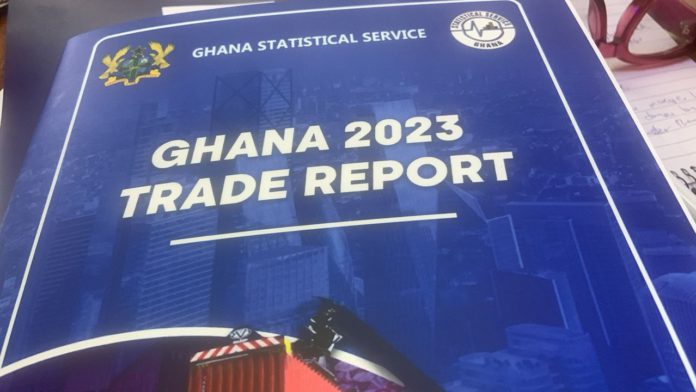The Ghana Statistical Service (GSS) has for the first time released the Export and Import Price Indices (XMPI).
These indices, also known as the Unit Value Indices, measure changes over time in the relative price of exported and imported products versus the quantities of exports and imports of these commodities.
According to the XMPI, the general prices for export commodities increased by an average of 20.4 percent between Q1 2023 and Q1 2024, while prices for imported commodities increased by 11.5 percent.
This suggests that the increase in Ghana’s trade flow has been mainly due to upward price changes rather than increases in output.
The XMPI, which were calculated using administrative data from the Customs Division of the Ghana Revenue Authority, are featured in the inaugural quarterly trade statistics newsletter released by GSS on 30th May 2024.
The quarterly trade statistics newsletter has been established by the Statistical Service to regularly provide updated statistics on trade to support informed decision-making.
The newsletter revealed that the trade surplus in Q1 2024 was GH₵11.5 billion, which is more than twice the value recorded for Q1 2023 (GH₵4.5 billion).
Additionally, the export value of cocoa products in Q1 2024 decreased to US$592.2 million, marking the lowest export value since 2021, compared to the average (US$825.8 million) for the first quarters of 2021, 2022, and 2023.
The 2023 Annual Trade Report was released on 30th May 2024.
This report is the third trade report to be released by the Statistical Service in the past year, following the 2022 Trade Vulnerability Report and the 2023 Mid-Year Report on Trade.
According to the report, the nominal trade deficit of GH₵ 4.8 billion recorded in 2022 was reversed to a trade surplus of GH₵ 5.3 billion in 2023. In comparison to 2022, gold exports became more important, increasing from GH₵54.1 billion to GH₵84.4 billion, while mineral fuels and oils decreased from GH₵43.7 billion to GH₵44.6 billion.
On the import side, Asia’s share of imports (41.3%) surpassed Europe’s (37.3%), with China emerging as Ghana’s largest import partner with GH₵33.9 billion.
READ ALSO:

